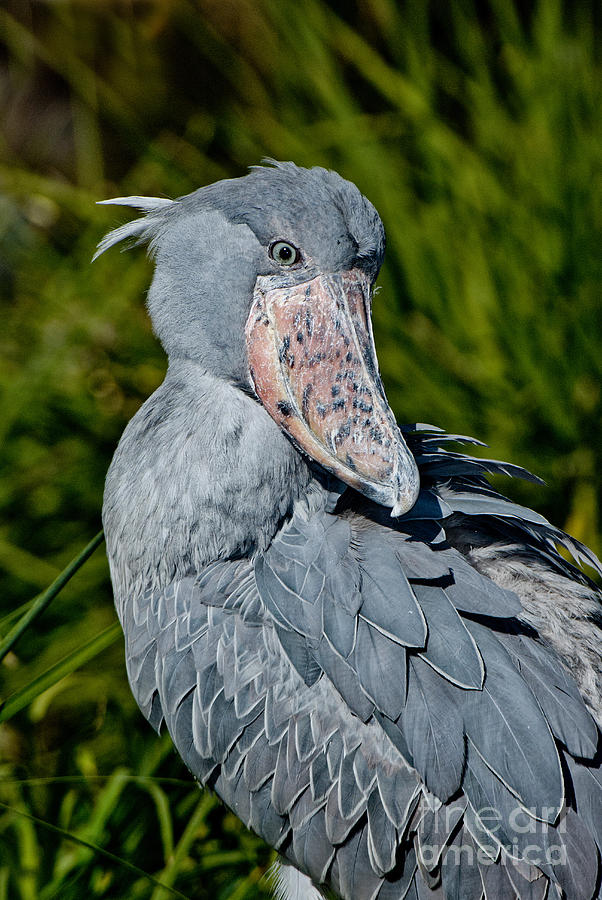
Shoebills are the only member of their genus Balaeniceps, and the only living member of their family, Balaenicipitidae.

The global population is currently estimated at between 5,000-8,000 birds and the species is classed as Vulnerable by the IUCN Red List of Threatened Species. This giant bird has a large body, huge wings, and a bill that looks like a shoe. It has been reported that it can attack and consume crocodiles. The shoebill stork ( Balaeniceps rex) is a large, broad bird that is endemic to the swamps and wetlands of Central and East Africa. The Shoebill stork, an enigma phylogenetically, was found to contain as its dominant biliary bile acid 16alpha-hydroxychenodeoxycholic acid, a heretofore. Online, shoebills are often discussed for their bizarre appearance and behavior. YourDespicable (yourdespicable): Shiver me timbers A shoe bill that attempts to be wholesome. Shoebill Storks ( Balaeniceps rex) are a species of bird known for their tall height (up to 5 feet) and wide-set bills. The shoebill stork has been known to kill crocodiles that are up to twice its size. Meet The Shoebill Stork (Balaeniceps Rex) Drive 4 Wildlife Paradise Wildlife Park 26.1K subscribers 3. The Shoebill is undergoing a continuing decline owing to the effects of habitat destruction and degradation, pollution, nest disturbance, hunting, and capture for the live bird trade. The shoebill stork is a predator and will kill any animal that it can catch, including crocodiles. The breeding season varies, being dependent on Africa’s seasonal flood cycle. The shoebill stork has to be one of the craziest-looking birds on planet Earth. Although a clutch of up to three dull, chalky-white eggs is laid, typically only one nestling survives due to inter-sibling rivalry, where the larger (generally first born) chick will out-compete and/or kill its siblings. The construction can be up to three metres wide. They are mostly white with a red face and a large yellow beak.

The nest is large and flattened, built amid swamp grasses or sedges and usually on a mound of floating vegetation or a small island. This stork is commonly found throughout Eastern Africa.

It derives its name from its enormous shoe-shaped bill. Individuals are highly solitary – often the male and female in a breeding pair prefer to occupy different ends of their shared territory. The shoebill (Balaeniceps rex) is a very large stork-like bird. This large waterbird is unmistakable due to its unique ‘shoe-shaped’ bill which gives it an almost prehistoric appearance – reminding us of birds’ dinosaur ancestry.įound in nine countries across Africa the species has a large range, but exists in small localised populations concentrated around swamps and wetlands.


 0 kommentar(er)
0 kommentar(er)
